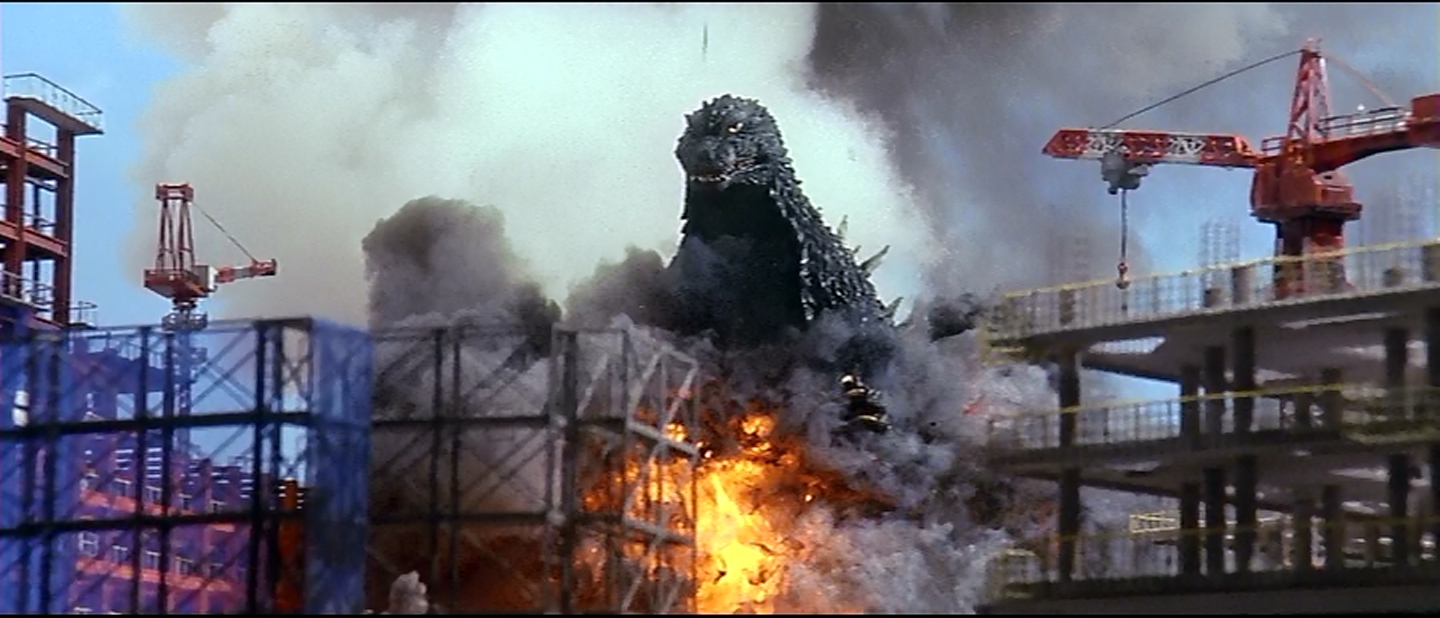
Our first monster on-screen is Mothra. Again ignoring the Rebirth of Mothra series, Mothra looks much like it did for Godzilla vs Mothra, although it can apparently fly as trans mach speeds. Mothra is no longer sleek and combat-oriented, but again hairy, as she was in her original film. If this is to make her sympathetic, I'm not sure. With her are the shobijin, who shows no signs of having a wicked triplet. The shobijin contact Dr. Shin'ichi Chûjô, played by Hiroshi Koizumi forty years after he first performed the role in Mothra in 1961. They want Godzilla's bones to be returned to the sea.
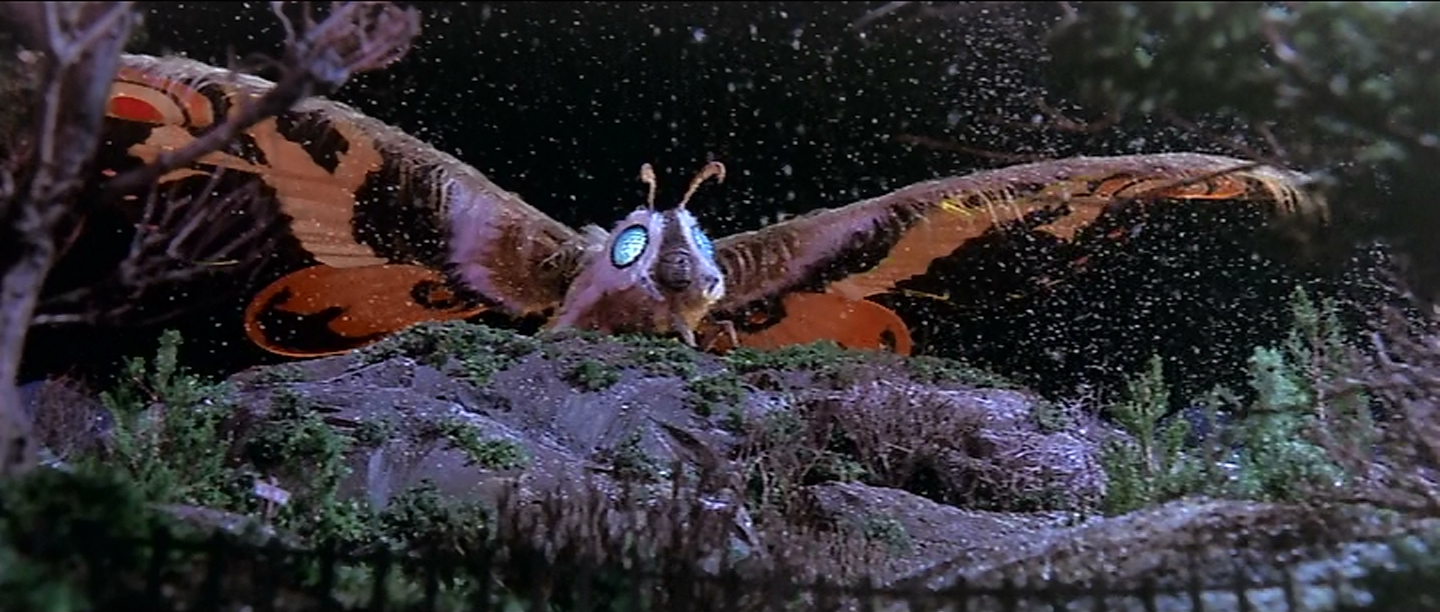
Less than ten minutes after the film begins, so do the plot problems. The shobijin want Japan to decomission Michagodzilla. When Kaneko's nephew reples that it is their only defence againat Godzilla, the tiny fairies promise Mothra will protect Japan from Godzilla. So where was she the whole last film? Worse, if the humans do not do this, Mothra will declare war on them. But this ultimatum is forgotten as soon as it is spoken.
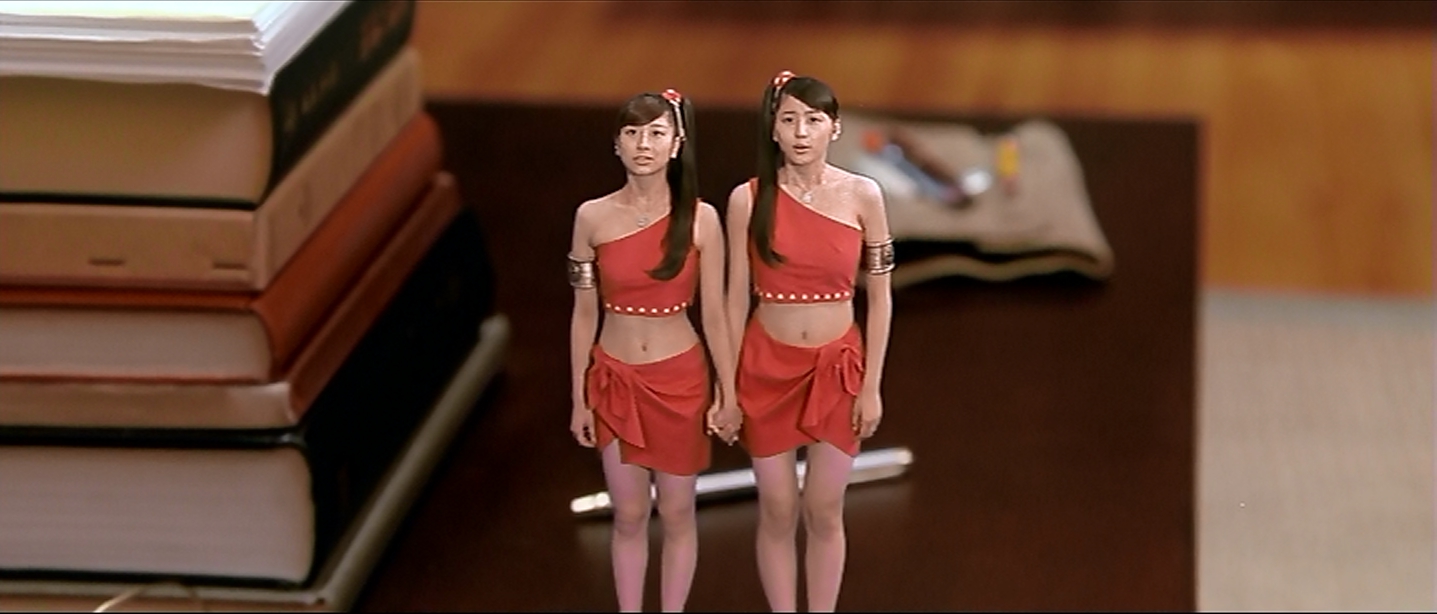
Mechagodzilla has been nerfed a bit, and is still under repairs from the damage taken in the previous film. The absolute Zero chest cannon has been replaced with a more run of the mill triple hyper maser. But here it also serves as a bone of contention. It is made from Godzilla's remains, the Shobijin want returned to the sea.
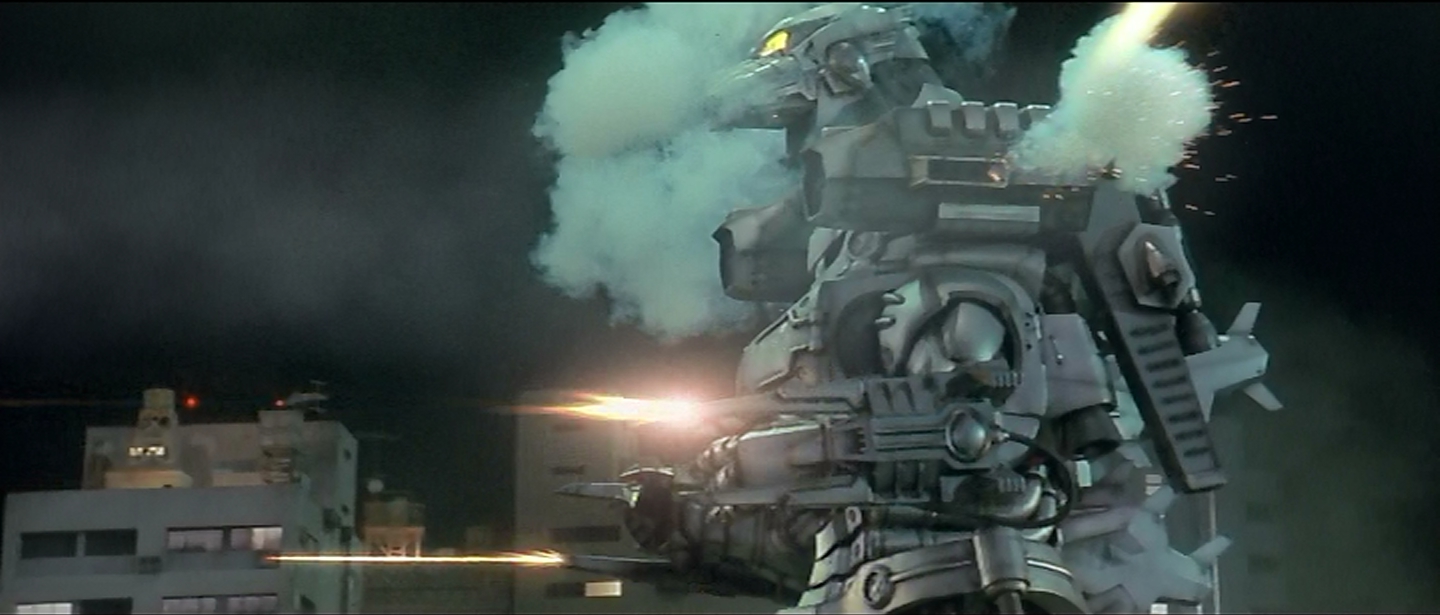
Giant turtle Kamoeba, from the obscure Space Amoeba washes ashore, letting everyone know that Godzilla is on the prowl again. Apparently, writer/director Masaaki Tezuka originally wanted this to be Anguirus, but Toho said no. It would have been oddly appropriate, since the cranky old dinosaur's last appearance was the first Godzilla vs Mechagodzilla, back in 1974. Apparently, Toho worried about the audience's reaction to Godzilla killing one of Godzilla's oldest friends. Which is odd, because not two films ago, Godzilla disintigrated Mothra, who is now back.
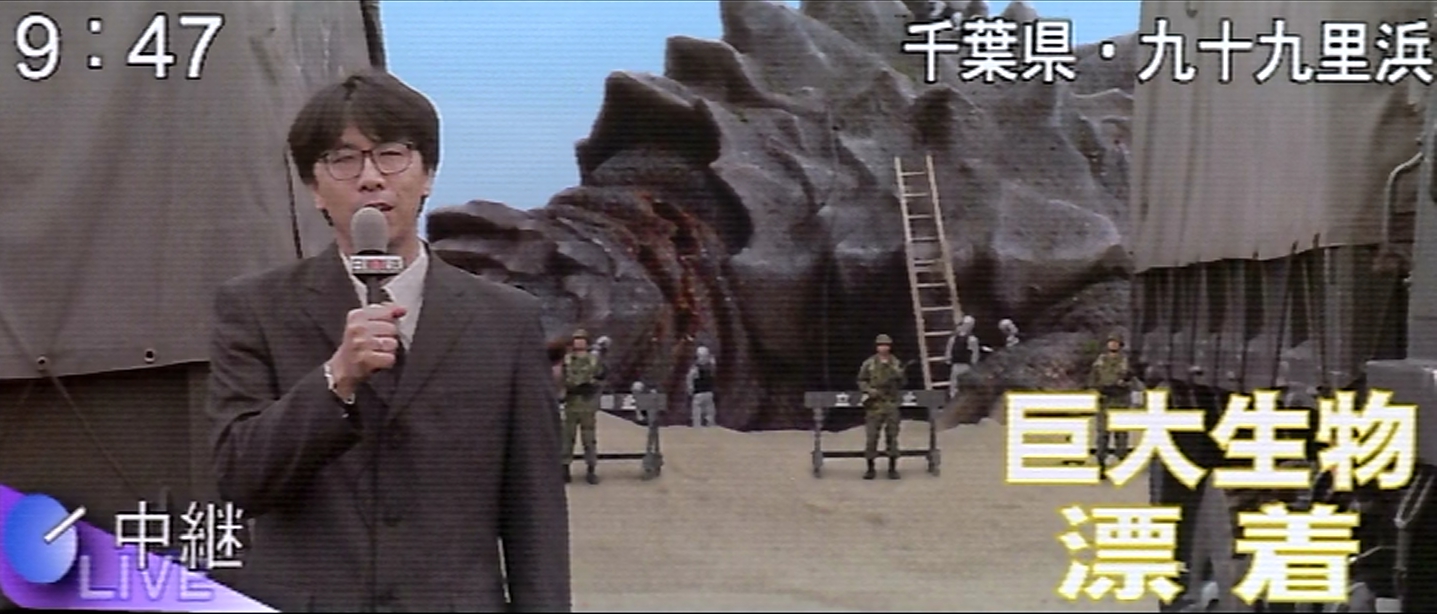
Where the military has been primarly lionized in the previous Masaaki films, here the vibe is avery different. Are the bones of Godzilla attracting Godzilla? Is military build-up inviting military attack? Godzilla appears for the first time attacking an American nuclear sub, as in Godzilla vs King Ghidorah and The Return of Godzilla. But is the submarine an innocent victim, or should have it not been there in the first place?
The film moves back to Ishiro Honda's attitude, that the military is there for show, but it almost completely ineffectiver against Godzilla. There are some very striking shots of missiles streaking across the Tokyo skyline, and the Hyper Maser is cool-looking, but none of these weapons do much more than inconvenence Godzilla. He sweeps away a phalanx of tanks with a single jet of his atomic heat ray.
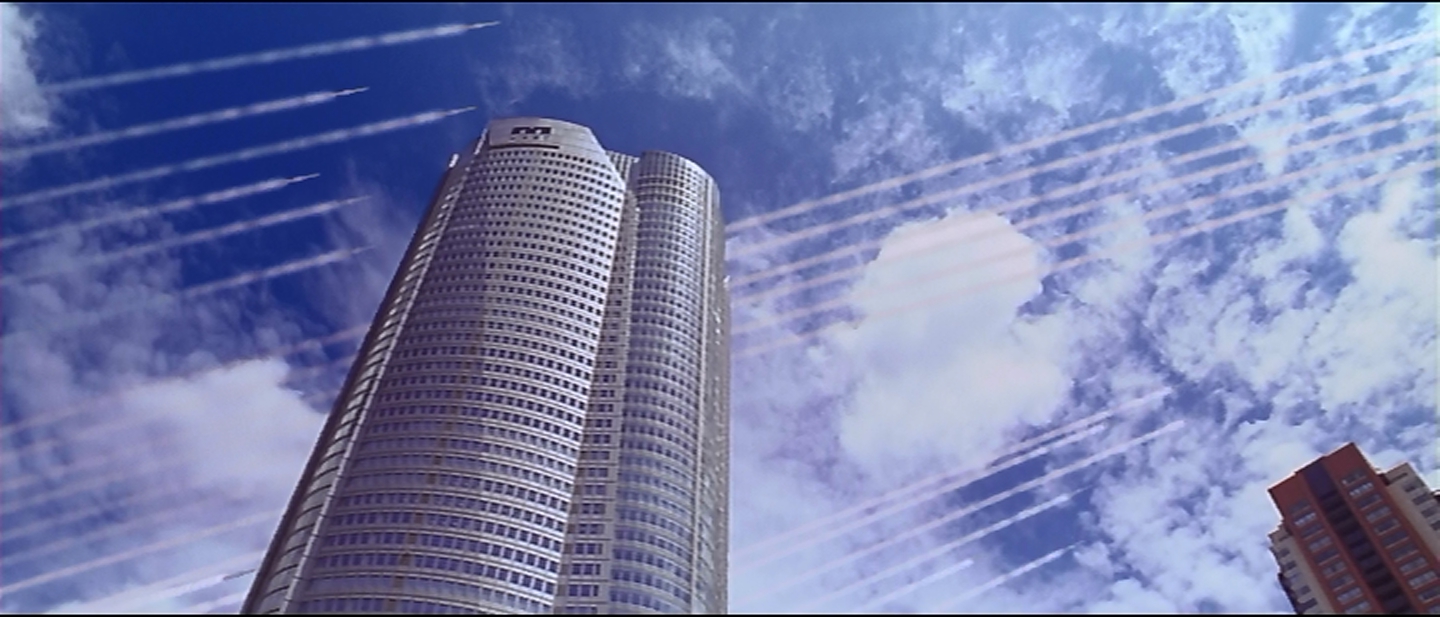
Godzilla looks much the same as he did in Godzilla Against Mechagodzilla, bvut he has a large scar on his chest. So Godzilla is not invulnerable. But Kiryu no longer has the Absolute Zero gun, which caused the injury.
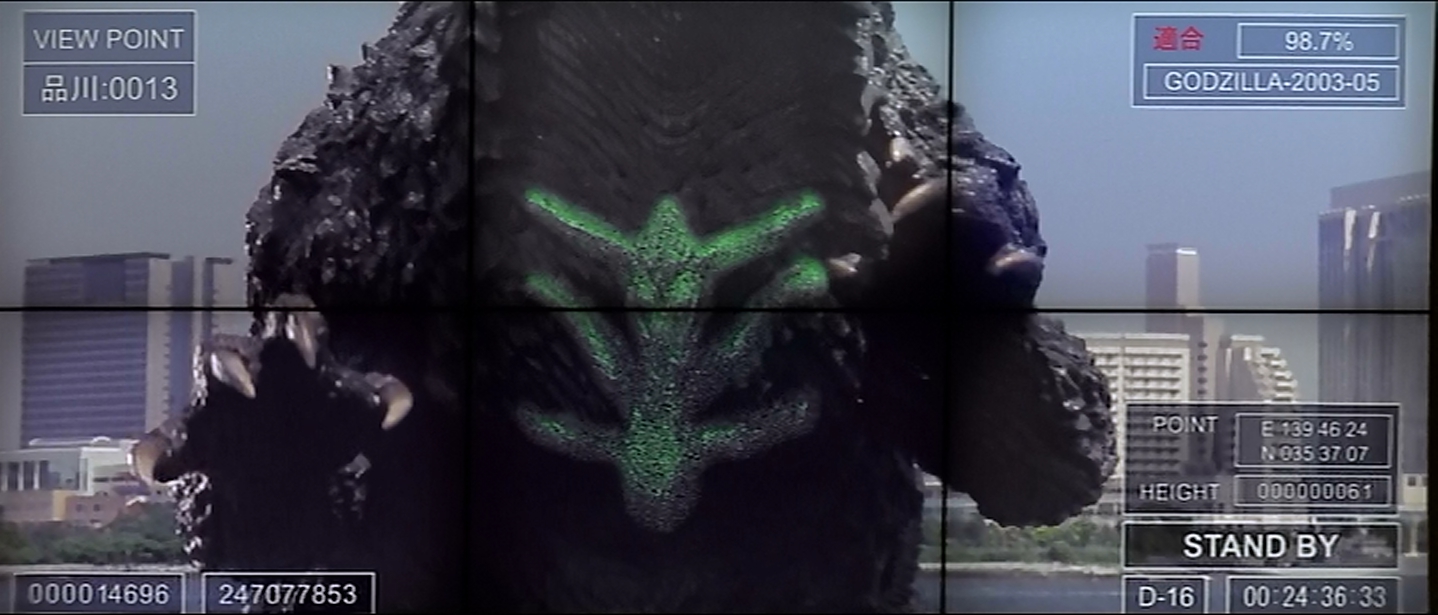
A lot of story beats and plot points are taken directly from Ishiro Honda's Godzilla vs Mothra, which is a little weird since that film doesn't exist in this continuity. In the initial confrontation, Mothra uses its poison scaled on Godzilla, which haven't been used since that 1964 film. But Chûjô was not involved in that, Lahtough actor Hiroshi Koizumi played the part of Dr. Miura) so I wonder how he knows about the scales. Again, for the first time since Honda's 1964 film, The Mothra larvae are twins. Godzilla's defeat is the same. Although Mothra can't take Godzilla down, the two larvae are able to, coating Godzilla in silk. This flies in the face of the shobijin's promise. Mothra can't handle Godzilla on her own.
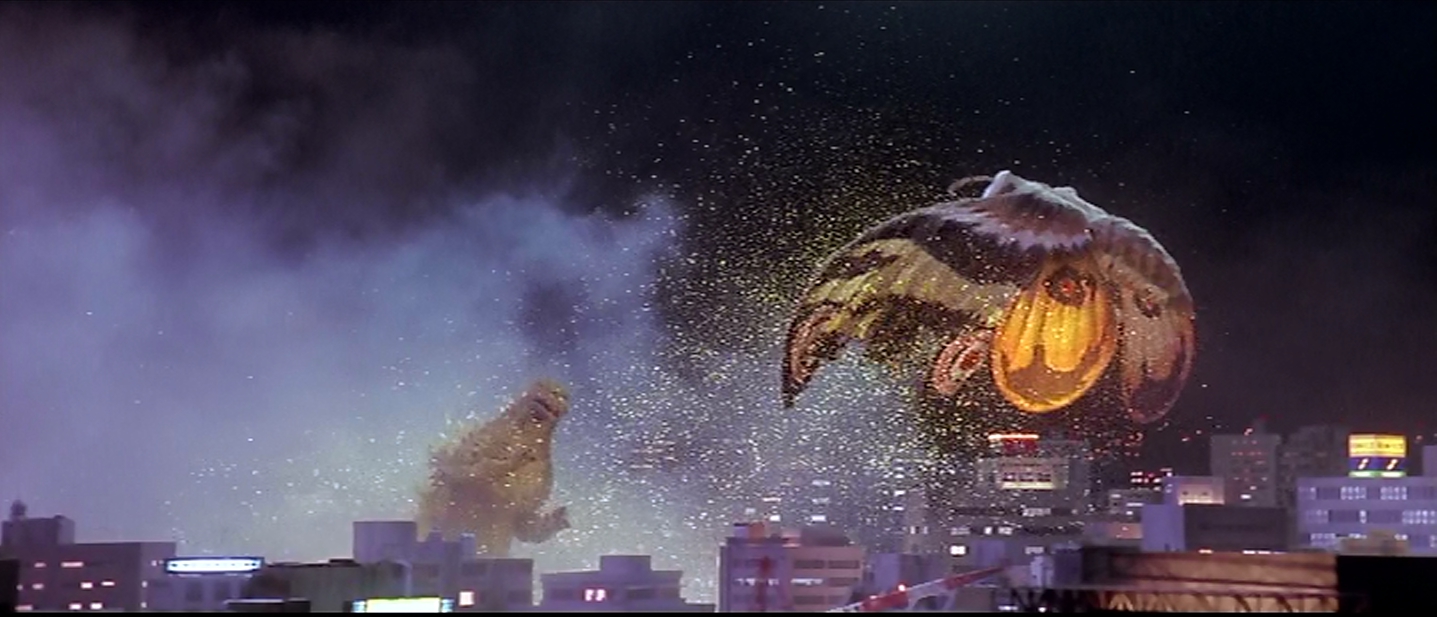
Mothra, who really hasn't had much religious symbolism since her debut, is at least willing to sacrifice herself for her children, taking a direct blast of Godzilla's atomic ray protecting her children. It plays out rather like her sacrifice in Godzilla, Mothra and King Ghidorah. The shobijin get a moment in front of a fallen cross, saying that the living should not touch the dead.
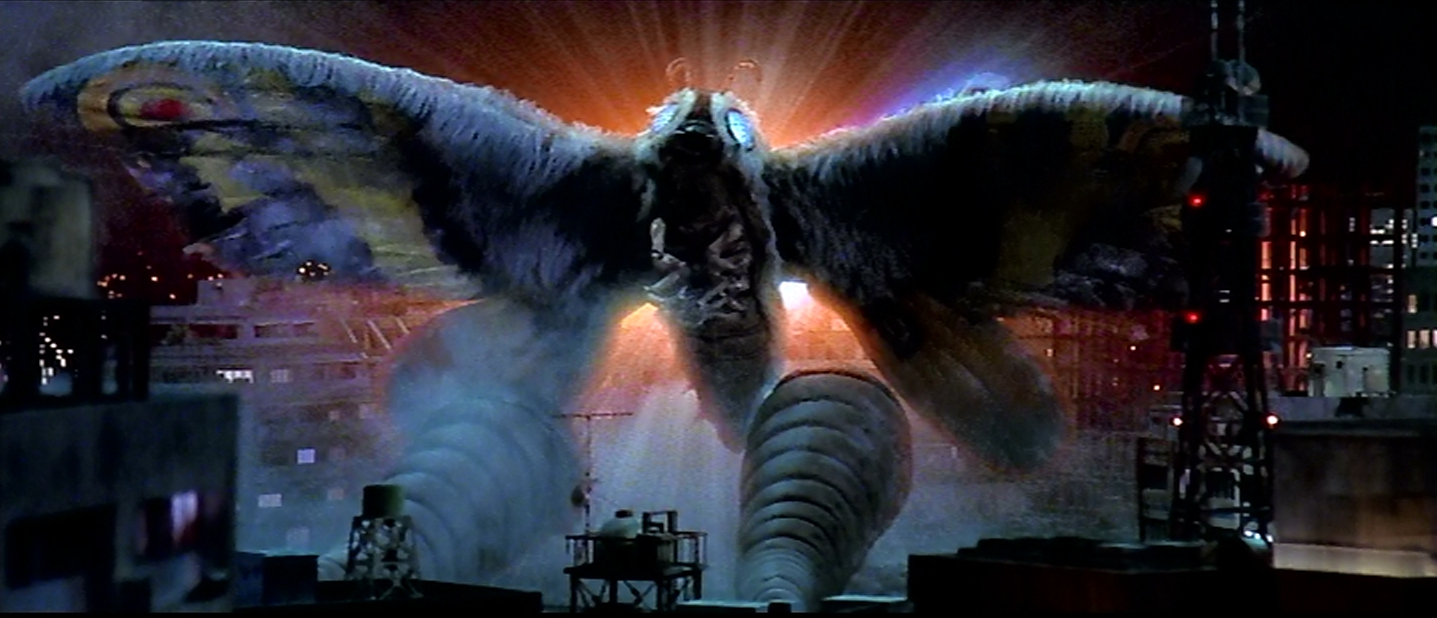
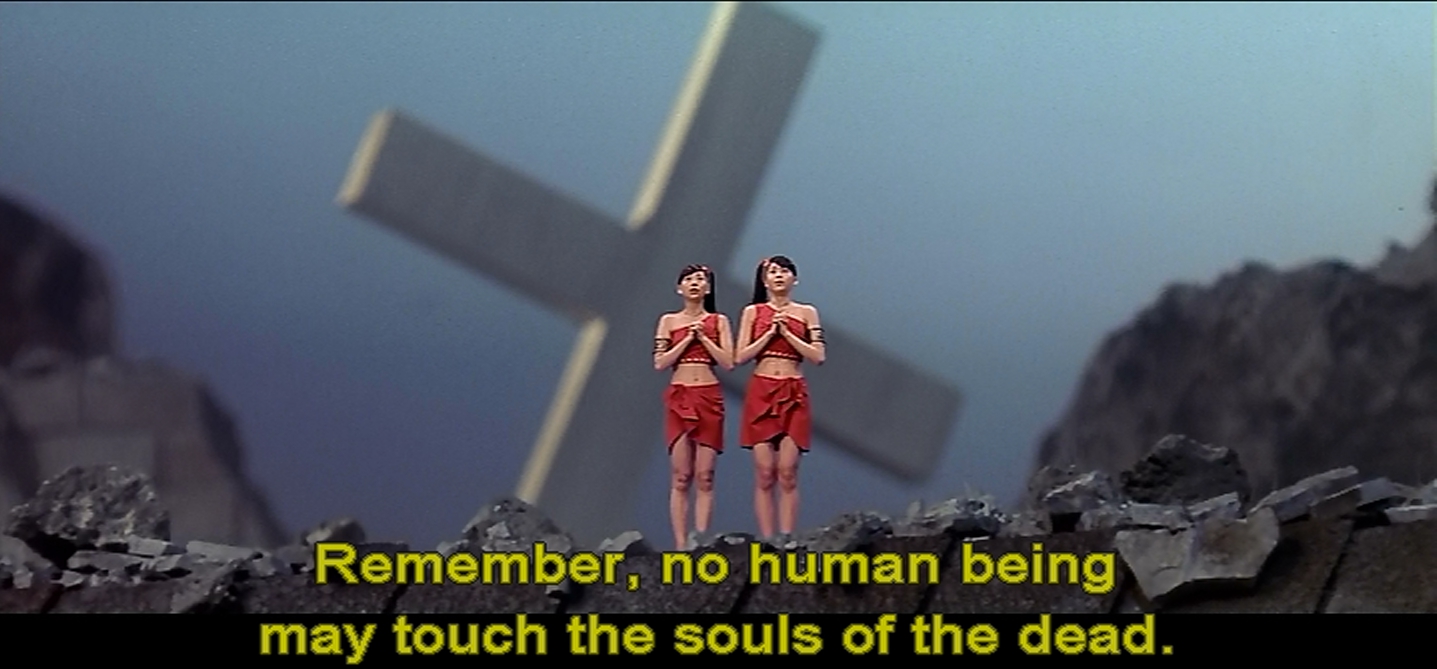
Godzilla: Tokyo SOS is fairly remakable in that there is only one monster showdown. The fight is on-going, and the human action is intercut with it. Again, Mechagodzilla proves to be Godzilla's greatest for, battering him around, knocking him down once. It's not as harsh as the job done by Mechagodzilla II, which temporarily cripples Godzilla. And ultimately, it's very inconclusive. The Mothra Laevae do the heavy lifting.
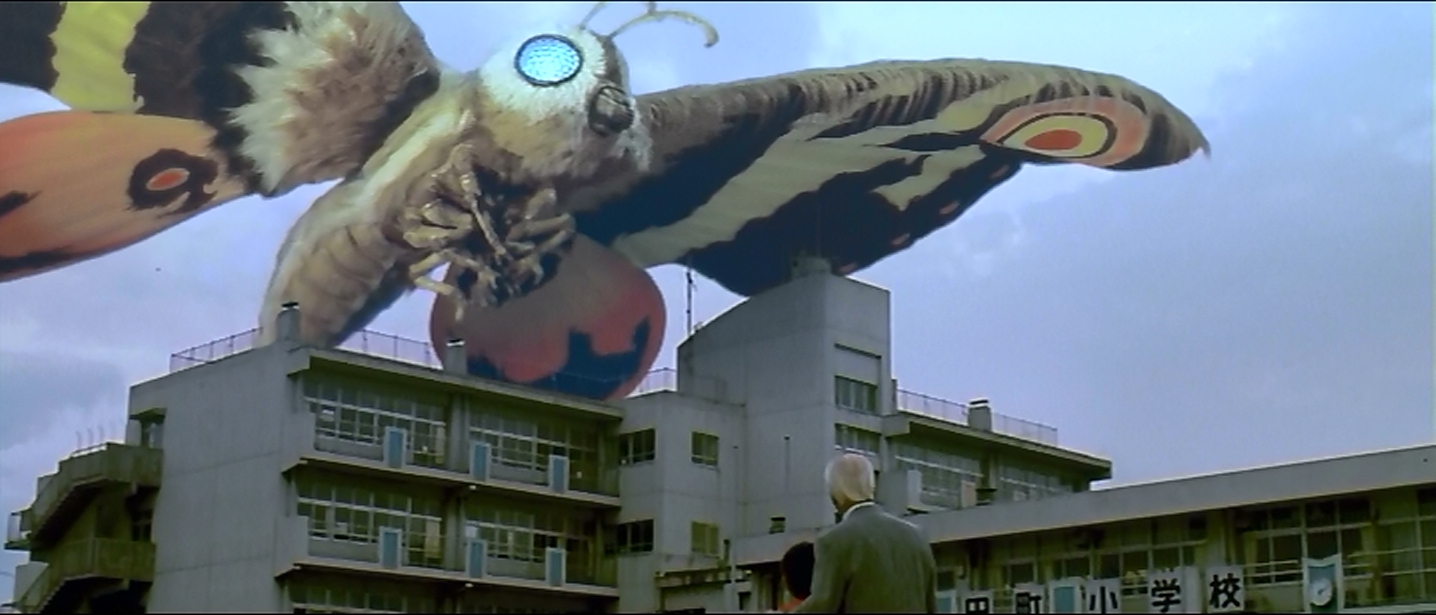
Ultimately, I struggle to remain interested in the film. The human drama isn't all that compelling. While it was nice to engage someone who wasn't (initially) a pilot, focussing instead on a technician. But he doesn't have much to work with. When Mechagodzilla goes down, he goes ouyt to fix it. Not a lot of character depth there. The Godzilla problem is ultimately solved as Kiryu takes it upon itself to fly Godzilla's silk-enshrouded form to the ocean. The humans do not prodice a solution. It's all done by the Mothra larvae and Kiryu. The protagonists are really just spectators.
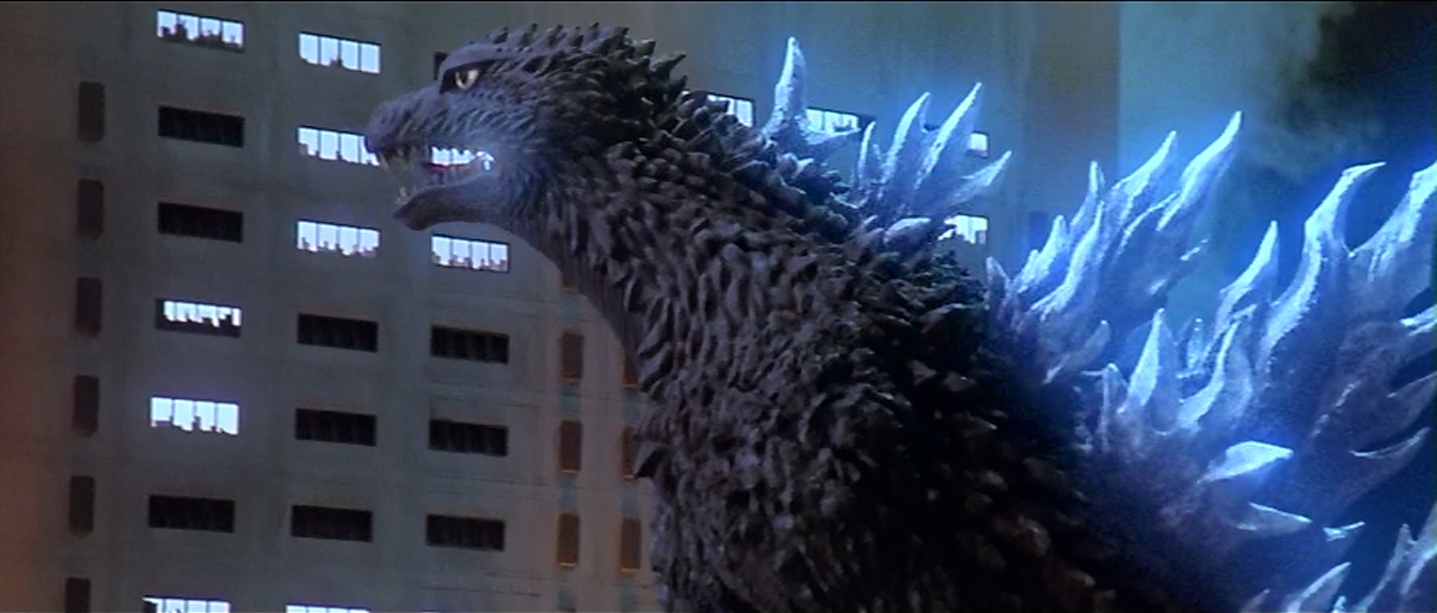
In two weeks, the Kaiju Blender, love it or hate it.
1 comment:
This is a great ppost
Post a Comment